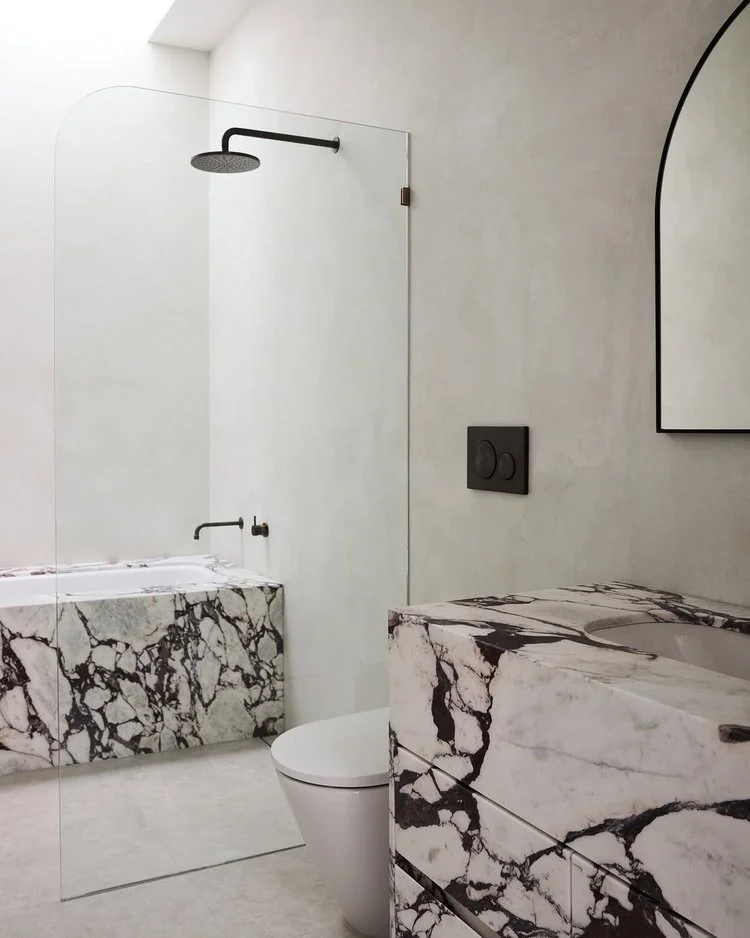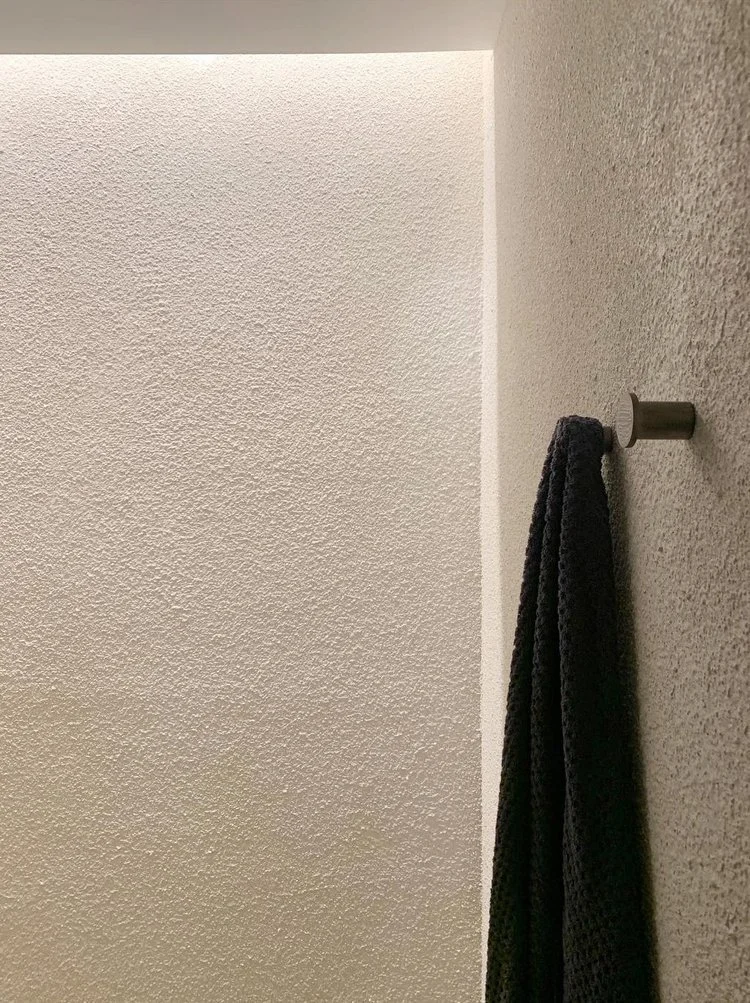Why Microcement Is the Ultimate Interior Wall Finish
Microcement is the ultimate interior wall finish because it combines seamless, textured beauty of a concrete render with a more versatile and durable application that works across a wider range of spaces. It offers a resilient, waterproof, and low-maintenance alternative to traditional materials, while allowing for a high level of customisation in colour and texture. In our X-Bond range, we have three unique finishes suitable for walls.
Unlike standard concrete renders, which are typically thicker and rougher, microcement is applied in thin, lightweight layers — and can even be applied directly over existing materials — for a handcrafted look that brings warmth and character to any room. Its seamless, grout-free surface makes it ideal for bathrooms, kitchens, living areas, and commercial interiors where aesthetics and practicality are equally important.
In this post, we’ll explore what microcement is, why it outperforms other interior wall finishes, and how it can transform your next project.
What Is Microcement? An Innovative Twist on Concrete
Microcement — also known as microconcrete or microtopping — is a thin, cement-based coating modified with adhesive polymers. It’s designed to be applied over almost any surface, including plaster, tiles, concrete, and even existing render. Despite being only 2–3 mm thick, it’s incredibly durable, making it suitable for interior or exterior floors, walls, furniture, and even wet areas like bathrooms and splashbacks.
Unlike traditional concrete render finishes, which are bulkier and more suited to external facades or rough applications, microcement offers a finer look with a luxurious, artisanal touch. Each application is hand-finished, meaning no two walls are ever exactly alike — a key reason why it's prized in architectural and interior design circles.
Traditionally, concrete rendering was used to provide a protective, textured coating to exterior walls. It had a raw, industrial aesthetic and was largely valued for its practicality rather than its appearance. Microcement, however, has reimagined concrete finishes for modern interiors — offering all the durability of concrete with a refined, designer-friendly look.
Its seamless nature and ability to form around corners, edges, and built-in features give it a minimalist appeal. It brings texture and movement to a wall with endless visual customisations, and it complements a wide range of interior styles — among other benefits…
Why Microcement Works So Well on Interior Walls
As far as interior wall finishes go, microcement ticks a lot of boxes. Here's why.
1. Aesthetic Versatility
Microcement can be tinted in virtually any colour, from white and beige to classic ‘concrete’ grey and almost any custom colour. The texture is also customisable; in our X-Bond range, we have three different application techniques which produce three different wall finishes — Micro, Mineral, and Natural Concrete. Whichever you choose, the result is a rich, tactile surface with tonal variation and depth — much more interesting than paint, but less dominant than tile or stone.
2. Seamless & Grout-Free
Unlike tiles or panel systems, microcement is completely seamless. There are no joins or grout lines to interrupt the visual flow of a space, making rooms feel larger, cleaner, and more cohesive. Better yet, this makes a microcement wall easier to maintain.
3. Water-Resistant & Durable
When properly sealed and waterproofed, microcement is suitable for wet areas, and highly resistant to scratches and staining. This is ideal for spaces such as bathrooms, kitchens, entryways, or feature walls in commercial spaces.
4. Eco-Friendly & Lightweight
Thanks to the adhesives in its formula, microcement is applied in thin layers directly over existing surfaces, which reduces the need for demolition and waste. It’s a low-impact solution that can be used to update old walls without removing what's already there (like tiles) making it both cost-effective and environmentally conscious — ensuring a lightweight construction, both literally and in regards to its lighter impact on the planet.
5. Flexibility
On the subject of remodelling old surfaces; microcement is generally more resistant to cracking than traditional renders. However, not all microcements are created equal. X-Bond, for example, is one of the most flexible formulations on the market, designed to withstand cracking as the underlying substrate naturally moves. In contrast, concrete render can be more prone to fractures over time, especially when applied over materials like wood, which expand and contract with temperature changes.
Interior Wall Applications for Microcement
Whether you're after a feature wall or a full interior transformation, microcement is one of the most versatile wall finishes available today. Popular applications include:
Bathroom walls and shower enclosures
Living room feature walls
Kitchens, including splashbacks and cupboard panels
Retail and hospitality spaces
Fireplace surrounds and alcoves
Is Microcement Right for Your Next Project?
In today’s interiors, microcement offers a perfect blend of form and function — giving you the look of a concrete finish with the versatility and performance that modern spaces demand. As a seamless, waterproof, and visually dynamic material, it stands out among other interior wall finishes for its ability to adapt to a wide range of visual and practical requirements while maintaining its durability.
Whether you're renovating, building new, or designing a standout feature wall, microcement delivers a contemporary, low-maintenance solution that transforms ordinary walls into architectural features.
Interested in using microcement for your next project?
Get in touch with our team to explore finishes, request samples, or receive a quote for microcement installation in Melbourne.










